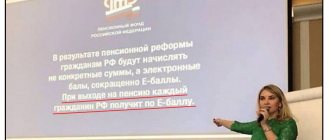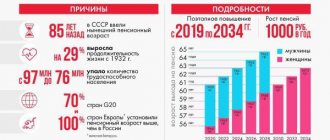Contents of the pension insurance agreement
If a citizen has chosen a non-state pension fund as an insurer to form a funded pension, then an agreement on compulsory pension insurance is concluded between them.
Under the terms of the contract, the fund is obliged to assign to the insured and pay him a cumulative share of the labor pension upon reaching a legally defined age. In the event of the death of a registered person, payments are made in favor of legal successors.
The text of the document contains a description of the personal data of the registered person, information about the insurance situation, details of the parties, as well as:
- duration of the transaction;
- obligations and rights of the participating parties (PF, insured person);
- accounting for received money and subsidizing it;
- liability of participants for improper fulfillment of contractual obligations in accordance with the legislation of the country;
- requirements for assigning and making payments from the funded portion of capital by age;
- criteria for transferring accumulated amounts to the legal successors of the deceased insured person;
- conditions for making additions and requirements for the transaction.
During the same period, only one insurance contract can be concluded between a citizen and a non-state pension fund.
Attention! The agreement is recognized as coming into force on the date of receipt of the money transferred by the insurer to the current account of the selected fund
Formation of pension components
In the compulsory pension system, insurance and funded pensions are formed mainly from insurance contributions. Until 2014, employers paid contributions for employees for both types of pensions. However, until the end of 2015, citizens were given the right to choose: to direct the entire amount to form an insurance pension or distribute it between insurance and funded pensions.
The general tariff for insurance payments (22%), taking into account the chosen method, is distributed as follows:
- in the case of the formation of the insurance part, 6% is allocated for payment of the basic share to current pensioners and 16% for the formation of future payments to the insured person;
- in the case of the formation of the insurance and funded parts of the pension, 6% is allocated for the payment of the basic share, 10% for the payment of the registered person himself, and 6% for the payment of the funded share.
The possibility of distributing insurance premiums is still available to those who entered into an employment relationship and started receiving contributions for the first time after 01/01/2014.
Citizens who have made a choice in favor of forming an insurance and funded pension have the right to refuse to form a funded pension at any time. To do this, you must submit an application or change the decision before the end of the year in which the application was submitted by withdrawing it.
Attention! The state does not index the funded portion of the payment. Investing accumulated funds can be both profitable and unprofitable, which will be reflected in the amount of the pension in the future
Payment and tariffs of insurance premiums
Contributions to compulsory pension insurance are calculated taking into account the maximum amount of earnings (865,000 rubles in 2021). If income exceeds the specified value, an additional tariff (10%) is provided.
The rate for transferring contributions this year is 22%. For himself, the policyholder pays 26% of the annual minimum wage, which in 2021 amounted to 11,280 rubles. For self-employed individuals and entrepreneurs who do not have hired employees, the fixed payment will be 26,545 rubles with the addition of 1% of the amount exceeding 300,000 rubles.
Pension Fund expenses in some periods may exceed the amount of accumulated funds if employers, for various reasons, do not pay accrued contributions. The resource deficit is covered through subsidies from the state budget of the Russian Federation.
Mandatory pension insurance
For every citizen of the Russian Federation, the reduction in question is primarily deciphered as “compulsory pension insurance.”
In 2002, a reform was carried out in the country, as a result of which now every working citizen or foreigner is an insured person. In this regard, such a person must pay certain insurance premiums monthly for compulsory health insurance. Their size is twenty-two percent.
In this way, the state budget annually receives enough funds to pay pensions to persons who are entitled to it.
What are ambiguous terms?
Before you find out the decoding of the abbreviation in question, it is worth clarifying why it belongs to the category of words that are characterized by ambiguity.
This abbreviation illustrates the ability of names to have not one, but several lexical meanings at once.
In the case of terms (a specialized word/phrase that means a specific concept and is used within a certain environment), polysemy is characteristic of them only due to homonymy.
This means that there are several parallel phenomena whose names look identical. However, they are in no way related to each other, and their similarity is the result of an ordinary coincidence. The existence of many options for deciphering the abbreviation OPS is just that case.
Insured persons
This definition applies to all citizens of a country who reside on its territory temporarily or throughout their lives. Also, insured persons in the OPS are people who:
- are foreigners, but carry out labor activities on the territory of the Russian Federation (only if there is a corresponding agreement from the employer);
- own a business and are classified as self-employed entrepreneurs;
- work outside of Russia, but at the same time continue to contribute money to the Pension Fund.
This category also includes clergy, members of some farms, tribal or small family communities, and other categories of citizens.
To confirm that a person is insured, he is issued a special OPS card, which is a certificate indicating the personal data of the future pensioner and SNILS (numeric identification number). Typically, this document is drawn up immediately upon employment for the first job. If the employer does not ask the employee to provide him or formalize the OPS, then most likely he is an unscrupulous boss. In this case, you should once again reconsider your intention to work for such a person.
To date, more than 100 million people living in the Russian Federation have taken out insurance.
Decoding sections of project documentation
Probably each of us has encountered the problem of incomprehensible letters on the front side of the project, and tried to substitute our own meanings into these abbreviations. You don’t have to suffer anymore, we have provided a complete list of decoding sections of the project documentation:
AVT - Automation AK - automation and control APV - automation of fire-fighting water supply APT - automation of a smoke removal system or fire extinguishing automation AR - Architectural solutions AS - Architectural and construction solutions ASKUE - Automated system for commercial metering of electricity ASTUE - Automated system for technical metering of electricity ATP - automation of a heating point , automation of technological processes ATX - automation of production technology Blag - Improvement and landscaping VK - Internal water supply and sewerage Drainage - Drains VPT - Culverts BP - Work statements VT - Vertical transport GDZ - Technical report on engineering and geodetic surveys GLD - Technical report on engineering - geological surveys GMI - Technical report on engineering and hydrometeorological tests of civil defense - List of measures for civil defense, measures to prevent emergencies of a natural and man-made nature GP - General plan of the GSN - External gas pipeline networks To - Road pavement Zp - Subgrade IZI - Technical report on engineering and environmental tests ILO - Buildings, structures and structures included in the infrastructure of a linear object IO - Information support KZH - reinforced concrete structures KM - metal structures KR - Design solutions KTSO - Complex of technical means of protection MPB - Demolition work organization project ( dismantling) of a linear object MO - Inspection materials NVD - External drains and drains NVK - External water supply and sewerage NSS - External communication networks of the facility. Artificial constructions. OV - Heating, ventilation and air conditioning OD - Road development OK - Basic structures OM - Supporting materials OOS - Environmental protection OPZ - General explanatory note OR - Relief organization OS - Security and fire alarm system OE - Electrical protection system PB - Provision measures fire safety PZ - Explanatory note POD - Project for organizing work on the demolition (dismantling) of a linear facility PO - Software POS - Project for organizing the construction of PNO - Project for external lighting PPO - Design of the right of way PT - Fire extinguishing (foam extinguishing) PTA - Measures to counter terrorist acts R - Land reclamation RT - radio broadcasting and television C - Collection of specifications for equipment, products and materials SV - Summary sheet of drawings SD - Estimate documentation SDKU - Dispatch control and management system SCS - structured cable networks, i.e. low-current communication and signaling networks SM - Estimate for the construction of capital construction projects SMIS - Structured system for monitoring and managing utility networks SOT - CCTV system SP - Composition of the SS project - Communication systems SSR - Consolidated estimate calculation TKR - Technological and design solutions for a linear facility TS - Heating supply TH - Production technology HS - Cooling supply EG - lightning protection and grounding EM - electrical equipment EC - power supply EN - external electric lighting EO - electric lighting (internal)
ES - Electricity supply
A little about pension reform
Pension insurance occurs in a circle: while the younger generation works and makes contributions, current pensioners receive the required payments.
But they receive it for the reason that they themselves previously worked and paid contributions. It turns out that current pensioners receive payments at the expense of current workers. And for the size of pensions to be decent, the ratio “number of pensioners – number of workers” should be approximately equal.
The 2021 reform raised the retirement age to 63 for women and 65 for men. The goal of the reform is to equalize the ratio so that for every 1 working citizen there are no 3 non-working pensioners. After all, the number of people retiring does not change, but the number of officially employed workers decreases every year.
So, despite the barrage of criticism that has fallen, the reform has a rational grain. It really can have a better impact on the financial condition of future retirees. The state will have the opportunity to carry out indexation every year, and not by 100 rubles, but by approximately 1,000.
Executive documentation of the OPS
Our company provides assistance in preparing documentation and obtaining approvals from the OPS Mogorgeostrest for carrying out survey engineering-geological and topographic-geodetic work, as well as for obtaining technical documentation and developing design documentation on their basis for the construction and reconstruction of State Unitary Enterprise MOSGORGEOTREST is: the only one authorized by the Government Moscow organization for the creation and maintenance of the Unified State Cartographic Basis of Moscow (Moscow Government Decree No. 24 of January 19, 1999) Types of work performed by the underground structures department (UPS)
- issuance of a preliminary technical report on the presence of underground communications, the possibility and conditions of development of the site according to the situational plan;
- issuance of a technical report on the possibility of allocating a site or extending a lease - Sketch No. 1 (Fig. 4);
- processing of technical conditions received by the Customer for connection to utilities with determination of the boundaries of the survey necessary for ordering a geological basis (construction passport) on a scale of M 1:500 - Sketch No. 2 (Fig. 2);
- consideration of working drafts (projects) with the issuance of a technical report and the issuance of a stamp of the established form for:
- laying and re-laying of utilities (Fig. 1, 3, 5);
- construction of buildings for various purposes and other types of construction;
- electrical protective installations;
- wells and pits.
checking the site for utilities and other factors influencing the location of the facility, incl. For:
- placement of open parking lots, garages, shopping pavilions, billboards, additional entrances, etc.;
- vertical planning, landscaping, landscaping;
- compiling a list of designed communications along city passages and streets to prepare a conclusion on the possibility of carrying out major repairs of road surfaces;
- coordinating routes for transportation of large and heavy cargo.
Trackback from your site.
fire safety of buildings
General requirements for fire protection of premises, fire safety of buildings and other construction structures are regulated by Construction Norms and Rules SNiP 21-01-97.
In the event of a fire, fire protection measures for buildings and structures must ensure:
— the possibility of evacuating people and material assets;
— the possibility of access for rescuers to the fire;
- non-spread of fire to neighboring buildings;
-limitation of direct and indirect material damage from fire.
The fire safety of buildings and building structures is characterized by their degree (limit) of fire resistance and largely depends on the combustibility (flammability) of the building materials used. The fire resistance limit of load-bearing elements of building structures ranges from 15 to 120 minutes, depending on the type of elements and the degree of fire resistance of the building. The fire resistance limit of a structure corresponds to the time (in minutes) before the onset of one or more signs of limiting states:
- loss of bearing capacity of the structure (R),
- loss of structural integrity (E)
- loss of thermal insulation ability (I).
Building structures are divided according to fire hazard into the following classes:
- K0 – non-fire hazardous,
- K1 – low fire hazard,
- K2 – moderately fire hazardous,
- K3 – fire hazardous.
The fire hazard of building materials is mainly determined by their combustibility, flammability, smoke-generating ability and toxicity.
Combustible building materials are divided into four groups:
- G1 – low-flammable,
- G2 – moderately flammable,
- G3 – normally flammable,
- G4 – highly flammable.
Taking into account the above, the fire safety of buildings is ensured by competent planning decisions, the correct choice of fire-resistant building structures and the placement of fire barriers, planning evacuation routes and choosing a fire extinguishing system.
Types of fire protection of buildings and structures:
Passive fire protection. Designed to limit the spread of flame and slow down the burning rate of residential and industrial buildings and premises.
Passive fire protection measures are not intended to extinguish fire. They slow down or limit the combustion process of materials, thereby providing more time for the evacuation of people and material assets. Fire protection also helps reduce physical damage to a building and reduce fire damage.
One of the most popular methods of passive fire protection is the use of special fire-retardant materials based on gypsum, which are able to suppress or resist the spread of fire. Building walls and floors made of concrete are also considered passive fire protection elements. Passive fire protection methods include thermally expanding coatings, fire doors and valves.
Thin-film intumescent coatings are applied to the surfaces of protected metal structures. When heated to temperatures of 150-200 °C, they increase many times (30-40 times) in volume, creating a thermal insulation barrier on the surface of the structure that prevents the spread of flame. An example of such a coating is fire-retardant paint KMD-O-Metal, produced by.
Active fire protection. It is carried out using systems for manual and automatic detection, extinguishing and warning of fires. Typical examples of such systems are sprinkler systems and fire alarm systems. To extinguish fires, water, aqueous emulsions of hydrocarbons, water vapor, chemical and air-mechanical foam, inert gases, carbon dioxide, powders, etc. are used.
In sprinkler systems, the sensitive element of the irrigation head melts when heated to a critical temperature, and water begins to spray into the combustion zone.
Active fire protection also includes alarm and fire detection systems. Heat and smoke sensors installed throughout the building can provide early warning of a fire, which will provide the necessary time for the evacuation of personnel and the arrival of firefighters. Such systems can also automatically notify emergency departments of the occurrence of a fire.
Thus, using the method of integrated implementation of active and passive fire protection at the protected object, fire safety of buildings and structures is achieved.
Our group VKontakte – https://vk.com/club103541242
We are on Odnoklassniki – https://ok.ru/group/52452917248157
We are on Facebook -
We are on Mail – https://my.mail.ru/community/norma-pb/
We are at Yandex-ZEN -
Conditions for receiving an insurance pension
When people talk about pensions, they most often mean the insurance part, since it continues to make up the largest part of the payments that pensioners receive. In order to receive an insurance pension, a number of conditions must be met.
1. Reach retirement age
In 2021, as a result of the reform, the retirement age in Russia was raised. Now it is 60 years for women and 65 years for men. However, the transition to a new age will be carried out gradually. Thus, in 2021, men born in 1959 will retire. and women born in 1964 In 2022 – men born in 1960. and women born in 1965 etc. This is presented more clearly in the tables below.
Men
| Year of birth | Year of retirement | Retirement age |
| 1959 | 2020 | 61 years old |
| 1960 | 2022 | 62 years old |
| 1961 | 2024 | 63 years old |
| 1962 | 2026 | 64 years old |
| 1963 | 2028 | 65 years old |
Women
| Year of birth | Year of retirement | Retirement age |
| 1964 | 2020 | 56 years old |
| 1965 | 2022 | 57 years old |
| 1966 | 2024 | 58 years old |
| 1967 | 2026 | 59 years old |
| 1968 | 2028 | 60 years |
| 1969 | 2030 | 61 years old |
| 1970 | 2032 | 62 years old |
| 1971 | 2034 | 63 years old |
2. Have a minimum work experience
We are talking about the insurance period, that is, the period during which the citizen and his employer made insurance contributions to the Pension Fund. In 2021, the minimum work experience is 11 years and will be regularly increased by a year in the future. So, in 2024 you will need to work for at least 15 years to count on an insurance pension.
3. Accumulate the threshold amount of pension coefficients
As mentioned earlier, all contributions received into the insurance pension account are transferred to coefficients. It is logical that the larger the “white” salary, the more of it will appear in the pension account. In order to receive an insurance pension, you need to reach at least 18.6 coefficients in 2021, and this minimum indicator will increase every year. From 2025, you will need to achieve at least 30 coefficients to retire. If a citizen does not have enough of them by the time he reaches retirement age, he can purchase additional coefficients, but in a limited amount.
If a citizen does not fulfill one of the conditions, then he cannot count on an insurance pension; he will only be entitled to a social pension, which is established by the state. And he will be able to receive it no earlier than five years after reaching the official retirement age.
How to calculate your insurance pension
The insurance pension consists of coefficients converted into rubles and a fixed payment. The cost of one coefficient is set by the state based on the economic situation in the country. For example, in 2021 it is 93 rubles and increases every year. For some important periods of life, the state provides additional coefficients. Such periods include military service or maternity leave. The cost of pension coefficients by year is shown in the table below:
| Date of increase in the value of one pension coefficient | Size (in rubles) | Base |
| 01.01.2020 | 93,00 | Federal Law of October 3, 2018 n 350-FZ |
| 01.01.2021 | 98,86 | |
| 01.01.2022 | 104,69 | |
| 01.01.2023 | 110,55 | |
| 01.01.2024 | 116,63 |
The amount of the fixed payment is set by the state and indexed annually. So, in 2021, the fixed payment to the insurance pension is 5,686.25 rubles. In some cases, the amount may be higher: for disabled people, workers in the Far North, as well as those over 80 years old.
Participants in legal relations
In Chapter 2 of the federal law “On compulsory pension insurance in the Russian Federation” you can find information that participants in legal relations under compulsory pension insurance are subjects of compulsory pension insurance and federal government bodies.
Their relationship is based on mutual fulfillment of obligations. The insurance risk in this case will be the situation in which the insured person lost his earnings due to the occurrence of an insured event (loss of a breadwinner, disability, reaching retirement age). The state bears subsidiary liability to insured citizens.
Along with the Pension Fund of Russia, a non-state pension fund can act as an insurer in the manner prescribed by federal law.
Subjects
The subjects of insurance include the policyholder, the insurer and the insured person. Any citizen falling under the OPS system has the right to independently choose an insurer who will handle the funds in his personal account.
Requirements for receiving an old-age insurance pension
You can become more familiar with the concepts of subjects of compulsory pension insurance by referring to the Federal Law “On Compulsory Pension Insurance in the Russian Federation” dated December 15, 2001 N 167-FZ (latest edition), namely its articles 4 to 7 inclusive.
Policyholder
The employers of the insured persons are usually called insurers. They are the ones who make monthly contributions to the pension fund for their employees. These funds go towards the formation of future pensions for employees. In total, the employer transfers 22% of the citizen’s annual salary fund, but no more than 1 million 21 thousand rubles for 2018. If the required contribution exceeds this amount, the employer will pay at a rate of 10%.
You can view the number of insurance contributions made by the employer in your personal account on the Pension Fund website.
Insurer
The insurer in the OPS system is the Pension Fund of the Russian Federation. It regulates the flow of funds and produces future pensions, and also deals with the calculation and payment of pensions to current pensioners. In addition to the state one, these functions can be performed by a non-state pension fund (NPF), as well as a management company. For 2021, a citizen can apply to the last two organizations only for voluntary additional pension insurance.
Insured persons
Citizens of the Russian Federation or foreigners residing in the territory of the Russian Federation permanently or temporarily, as well as stateless persons, can be considered insured persons. All of them must meet one of the following criteria:
- carry out work activities under the terms of an employment contract or under a contract of a civil law nature;
- are individual entrepreneurs, lawyers, notaries or are engaged in farming;
- work abroad in the Russian Federation, but make contributions to the pension fund of the Russian Federation.
The labor pension, within the framework of compulsory pension insurance, consists of basic, insurance and funded parts
To identify a citizen in the compulsory pension insurance system, all insured persons are issued certificates of compulsory pension insurance. They indicate all personal information, as well as the insurance number of an individual pension account (or SNILS). You can obtain this document by contacting the Pension Fund in person or upon first employment.
Rights and obligations of participants
The rights of the insurer include:
- Conducting a check of documents related to the insurance policy at the insured's premises;
- the requirement to eliminate the found violations of the legislation of the Russian Federation on the OPS system;
- obtaining information about taxpayers;
- refunding insurance premiums to policyholders in cases where it is not possible to clarify for whom these premiums were paid;
And to his responsibilities:
- monitoring the correctness of presentation and reliability of information;
- preparation and timely payment of insurance pensions.
The rights of the policyholder include:
- participation through representatives in the management of the public security organization;
- payment of employer contributions for insured persons;
And to the responsibilities:
- provision to the territorial bodies of the insurer of all documents necessary for the normal functioning of the insurance policy system;
- ensuring the implementation of the rights of insured persons.
Formula for calculating the funded part of a pension
The rights of insured persons include:
- participation in improving the OPS system;
- receiving information from the employer about the contributions paid for them;
- protecting your rights in court;
- payment of additional contributions to the insurance pension;
And to their responsibilities:
- presenting documents with reliable information to the insurer;
- notification to the insurer of all changes affecting payments;
- compliance with all conditions established for payments of compulsory pension insurance.
How to calculate insurance premiums
Insurance premiums are calculated as a percentage of the wage fund. To the Pension Fund of the Russian Federation, the employer monthly transfers 22% from the wage fund (WF) of employees whose income has not exceeded the limit established by law, and 10% from the amount exceeding the established limit.
How to find out contributions to the Pension Fund if you are employed? To do this you need to make simple calculations. For example, these:
- Your monthly salary is 50 thousand rubles, which means that in a year you will earn 600 thousand rubles.
- The maximum base for calculating contributions to compulsory health insurance in 2021 is 1,150 thousand rubles.
- Since the threshold has not been exceeded, the employer transfers 22% of the payroll for you, i.e. for the current year he will transfer 79.2 thousand rubles to the Federal Tax Service. These funds will be used to form insurance pensions for current pensioners.
Let's assume you earn 2 times more, that is, in 2021 your income will be 1200 thousand rubles. How to calculate contributions to compulsory pension insurance in this case? From the amount of 1150 thousand rubles. 22% will be transferred to the budget, and 10% from the remaining money.
You can calculate insurance premiums for the year as follows: 1150 * 22% + (1120 – 1150) * 10% = 253 + 5 = 258 thousand rubles. The examples given clearly show: the higher the salary, the more contributions will be transferred to the Pension Fund.
However, contributions are not calculated on all income. Sick leave, various social benefits, cash gifts, winnings, and other income, the receipt of which is not related to the performance of work duties, are not subject to insurance contributions by law.
Basic concepts of the security system
The basic concepts of the compulsory pension insurance system include, for example, the concept of “insured persons”, which means citizens who fall under the compulsory pension insurance system. Also, it is important to know that the funds of compulsory pension insurance are the amount managed by the insurer under compulsory pension insurance.
Labor pension structure
In the Law “On Compulsory Pension Insurance”, the budget of the Pension Fund of the Russian Federation is a form of formation and expenditure of a sum of money for purposes that meet the OS system, and mandatory payments are those insurance contributions that the employer makes to the employee’s personal account. The cost of an insurance year is the amount of money that is calculated using the formula “the minimum wage multiplied by the insurance premium rate.” The joint part of the insurance premium tariff is that part of the insurance premiums that goes towards fixed payments and social benefits.
You can learn more about the meanings of the basic concepts of the mandatory pension insurance system in Article 3 of the Federal Law “On Compulsory Pension Insurance in the Russian Federation” dated December 15, 2001 N 167-FZ.
Basic concepts and subjects
Basic concepts related to OPS:
- Mandatory insurance coverage is the fulfillment by the Pension Fund of Russia of its own obligations to the insured citizen upon the occurrence of an insured event by providing insurance/funded pension provision.
- OPS funds are money managed by the Pension Fund under OPS.
- The Pension Fund budget is a form of education and expenditure of money for the purposes of public security in the Russian Federation.
- Mandatory payments are amounts contributed by the employer to compulsory pension insurance.
The OPS system involves:
- Insured persons are people who have SNILS. These may be citizens who:
- work under an employment or civil contract;
- provide themselves with work. This includes businessmen, lawyers, farmers, notaries;
- work abroad, but make payments to the Pension Fund.
SNILS is a green plastic card on which information about the owner and account identifier in the Pension Fund of the Russian Federation are written. Previously, the document was issued upon a visit to the Pension Fund or upon the first official employment. Now SNILS are no longer issued; data on insured persons is entered into an electronic database.
- Policyholders are the party making contributions to the Pension Fund for their own employees towards their future pension benefits. This includes employers: legal entities, individual entrepreneurs, individuals. Policyholders have the right to:
- obtaining the necessary information from insurers if it relates to the work of the insurance company;
- protection of existing rights in court;
- transfer of additional funds to own employees for the formation of funded pension provision;
- taking part in system management.
The responsibility of the policyholder is to register in accordance with the legally established procedure and timely transfer funds to the pension fund.
- Insurers are the party that manages the money in the government fund. This includes Pension Funds and Non-State Pension Funds. Insurers have the right:
- control other entities, demand elimination of violations;
- exchange data with Federal Tax Service institutions;
- manage the funds of the pension fund.
Insurers must assign, calculate and pay pensions to insured citizens. The fulfillment of obligations by the pension fund is guaranteed by the state itself.
Pension insurance in the Russian Federation
In accordance with Federal Law - 167, all citizens of the Russian Federation participate in the pension insurance system. The Pension Fund of Russia (PFR) registers citizens in the compulsory pension insurance system (OPS) from the moment of their birth.
A fundamental component of the Russian pension system is state-guaranteed compulsory insurance, which was created in 2002 to provide financial assistance to socially vulnerable members of Russian society. In this system, 2 components of the pension are clearly indicated:
- mandatory;
- cumulative.
This model is called an insurance model, and the size of the pension depends on the contributions paid by the employer and transferred to the pension fund. Accounting for these contributions in the future forms the basis of the pension. In the current system, pension payments depend on the following factors:
- total length of service recorded by the state;
- the amount of contributions transferred to the budget;
- the profit that pension structures receive as a result of investing these funds.
Important! You can influence the size of your pension, but only on the funded part. To increase the funded portion, you must also become a member of an additional non-state pension fund (NPF). This makes it possible to increase your level of well-being in the future due to a significant increase in your pension.
The Russian security system consists of:
- insured citizens of the Russian Federation;
- insurers – employers;
- insurers - Pension Fund and Non-State Pension Fund.
The PRF opens an individual personal account for each citizen of the Russian Federation, where insurance payments are sent monthly - deductions from his income. Thanks to Pension Fund accounts, it is possible to collect information about contributions transferred by each specific person.
Important! The employer is responsible for the transfer of insurance premiums in the OPS system.
General provisions
This law was published on December 15, 2001. During its existence, changes have been made to it, the latest dated December 11, 2018.
The law begins with general provisions. This is the introductory part, which defines the basic concepts, talks about what the document regulates, and what its legal basis is.
This law provides:
- regulation of legal entities and legal relations between subjects;
- rights and obligations of the parties, their responsibilities.
The pension insurance legislation takes into account the provisions set out in the Constitution of the Russian Federation and other laws relating to pension insurance. Changes in these documents may also affect the Federal Law, so you need to keep track of the changes.
About the principles
The state itself has laid down the principles by which this system operates. The principles can be described as follows:
- Availability of personification in relation to all received contributions.
- Use of contributions only for direct purposes.
- The determining factors for the amount of insurance are pension savings, wages, and length of service.
- Proportionality for citizens between insurance payments and assistance.
- To maintain their standard of living, pensioners are always provided with additional support.
- Funds for this system are generated independently of other areas.
- Funds are distributed centrally, to specific regions and industries.
- Funds transferred to the Pension Fund become the common property of the state.
- Subjects should be interested in material support to the same extent, regardless of location.
- The state guarantees that payments will be made to the insured persons.
- Unconditionality.
- Unity and centralization, national significance.
PFR and NPF
Related publications
The abbreviation OPS stands for compulsory pension insurance and refers to the pension system. Compulsory pension insurance is a state pension program that began operating in the Russian Federation in 2002, after the pension reform in the compulsory pension system. Explanation in the Pension Fund (non-budgetary fund) is given as a system of functioning of participants (insurers, policyholders and insured persons) within the framework of the state program for the formation of a funded pension for all citizens of working age, on account of which insurance contributions are made.
Since 2002, fundamental changes have occurred in the Russian pension system. The distribution system was replaced by the distribution-storage system. Thus, since 2002, all citizens born in 1967 and younger began to form an accumulative pension capital, which amounts to 6% of monthly official earnings, can be managed by the owner and inherited by his legal successors. You can receive the right to pay a funded pension only when the pension grounds arise.
This is interesting: How to declare bankruptcy as an individual







